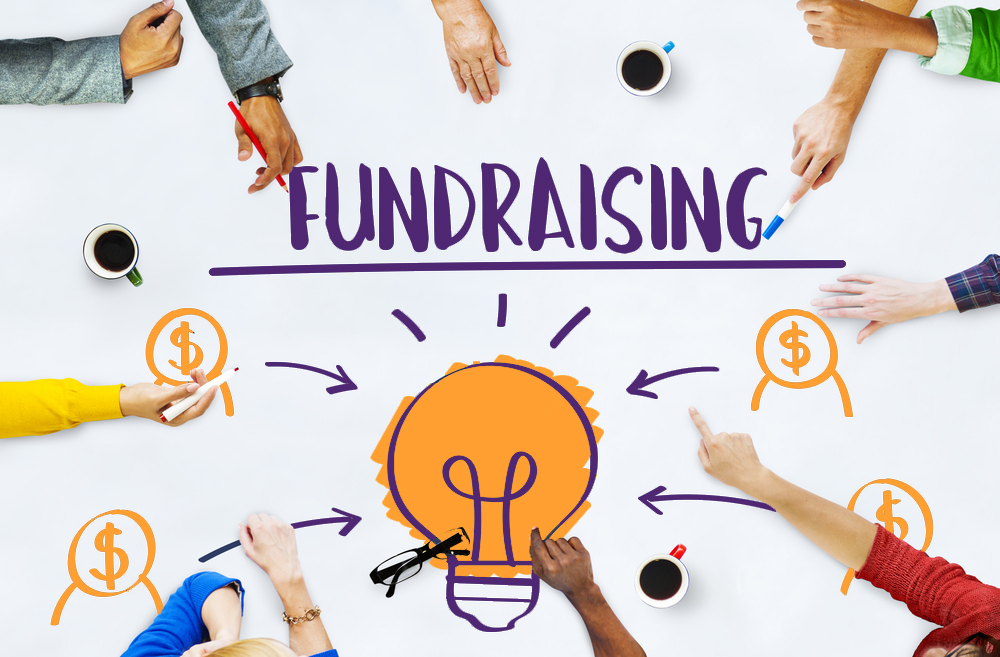Top Nonprofit Fundraising Ideas: Ingenious Approaches to Elevate Even More Funds
Top Nonprofit Fundraising Ideas: Ingenious Approaches to Elevate Even More Funds
Blog Article
The Duty of Area Engagement in Nonprofit Fundraising: Structure Lasting Relationships for Lasting Support
Neighborhood interaction is increasingly acknowledged as a crucial component of successful nonprofit fundraising. The approaches and approaches employed to involve communities differ extensively, raising important concerns regarding effectiveness and impact.
Comprehending Community Involvement
Area involvement is an important element of successful not-for-profit fundraising initiatives. Nonprofits should determine essential stakeholders-- such as neighborhood participants, neighborhood businesses, and various other companies-- to create effective engagement techniques.
Reliable community involvement is asserted on active listening and responsiveness to the requirements and interests of the neighborhood. This procedure includes obtaining comments, comprehending neighborhood dynamics, and making sure that the company's goal straightens with local top priorities. Involving the neighborhood can take numerous kinds, including public conferences, volunteer possibilities, and partnership campaigns, each created to encourage participation and financial investment in the organization's objectives.
Furthermore, area interaction must be come close to as a continuous discussion rather than an one-time initiative. By promoting a comprehensive environment where community voices are heard and valued, nonprofits can build a strong foundation for future fundraising ventures. Eventually, a deep understanding of community interaction empowers organizations to develop genuine links that enhance their total efficiency and sustainability.
Advantages of Strong Relationships
Strong relationships developed through area involvement yield numerous benefits for nonprofit fundraising efforts. Firstly, these relationships foster trust fund and integrity, crucial components in encouraging donors to contribute. When possible fans see a not-for-profit actively included in their community, they are more probable to count on its mission and effect.

Moreover, these relationships promote reliable interaction. Nonprofits can take advantage of their connections to share tales of impact, updates, and requires, guaranteeing that fans stay educated and engaged. This open line of communication not just strengthens bonds yet also urges referral promo, broadening the nonprofit's reach.
Lastly, solid community ties can bring in new partners and enrollers. Organizations and people are a lot more inclined to line up with organizations that demonstrate significant community participation, giving added resources and assistance that can dramatically boost fundraising capabilities. Hence, growing robust relationships with community involvement is important to a nonprofit's lasting fundraising success.
Approaches for Efficient Involvement
How can nonprofits successfully involve their areas to enhance fundraising initiatives? Normal updates, involving content, and calls-to-action can galvanize community passion and participation.
2nd, organizing area occasions, such as workshops, volunteer opportunities, or fundraising drives, helps with in person interaction, allowing nonprofits to display their impact and initiatives. These occasions not only elevate funds however also grow partnerships and allow community members to involve directly with the cause.
Third, implementing individualized communication strategies can boost interaction. Customizing messages to specific benefactor sections based on interests and past contributions fosters a feeling of belonging and investment in the company's mission.
Finally, creating collaborations with local businesses and area leaders can intensify outreach initiatives. Joint campaigns can improve exposure and integrity, showing a collective dedication to the area's health. By incorporating these techniques, nonprofits can develop enduring relationships that improve fundraising efforts and drive sustainable support.
Measuring Involvement Success
While involving the area is important for successful nonprofit fundraising, measuring the performance of these engagement initiatives is similarly vital. Developing clear metrics permits organizations to examine exactly how well they are getting in touch with their audience and accomplishing their fundraising objectives. Secret efficiency indications (KPIs) such as benefactor retention prices, volunteer participation levels, and interaction on social media sites systems offer tangible information for assessment.

Frequently evaluating these metrics makes it possible for companies to pivot their techniques when required, making sure that neighborhood interaction stays straightened with their overall objective. In addition, sharing these results with stakeholders cultivates transparency and develops count on, encouraging more community participation. Inevitably, a durable dimension structure not only notifies future fundraising efforts yet also enhances the connection in between the nonprofit and its fans, preparing for lasting success.
Instance Studies in Area Influence
Various instance researches highlight the extensive impact that community involvement can have on not-for-profit fundraising success. One significant example is the "Something to chew on" effort, where a local food financial institution partnered with schools and businesses to host area dinners. These occasions not only increased funds yet also cultivated a feeling of belonging among participants, significantly enhancing benefactor retention prices.
An additional compelling instance is the "Eco-friendly Spaces Task," which involved neighborhood homeowners in the revitalization of urban parks. This campaign not just garnered financial backing from regional services however likewise cultivated a volunteer base that contributed to continuous maintenance and programs. The sense of ownership and pride amongst area participants translated into continual contributions.
In the realm of arts, the "Art for All" project effectively involved local artists and patrons to produce collaborative art installments, causing enhanced presence and contributions for a local arts nonprofit.
These instances highlight that when nonprofits prioritize community participation, they can produce enduring partnerships that improve fundraising initiatives, guaranteeing lasting assistance and promoting a vibrant community culture. Such situations show that area involvement is not simply a method however an important column of not-for-profit success.
Conclusion
Finally, area engagement is essential to the success of nonprofit fundraising efforts. By fostering strong connections with regional stakeholders, organizations improve depend on and trustworthiness, bring about boosted benefactor retention and loyalty. Applying reliable interaction techniques and gauging their effect makes certain that nonprofits can prosper and adapt. Eventually, a durable structure of neighborhood assistance not only nonprofit fundraising ideas enhances fundraising prospective but likewise grows a society of cooperation, important for attaining long-term business goals and maintaining purposeful influence.
Nonprofits should identify key stakeholders-- such as area members, local services, and other organizations-- to create effective engagement strategies.
/tastea-2019/images/fundraiseelements1-03-cb88c.png)
In conclusion, community interaction is essential to the success of not-for-profit fundraising initiatives.
Report this page